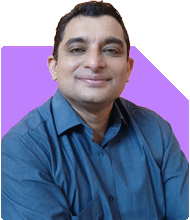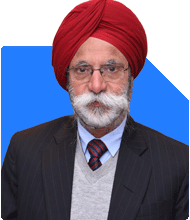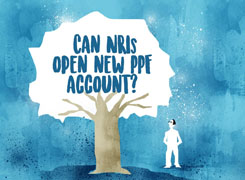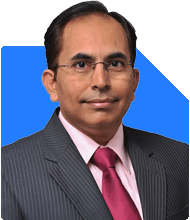Ramalingam Kalirajan |10902 Answers |Ask -Follow
Mutual Funds, Financial Planning Expert - Answered on May 01, 2024
He has an MBA in finance from the University of Madras and is a certified financial planner.
He is the director and chief financial planner at Holistic Investment, a Chennai-based firm that offers financial planning and wealth management advice.... more

Good day Mr Ramalingam, I am 43 years in govt service PGrade 12A and scheduled to retire in 2036. I have a pensionable service. I have 2 children- son is 14 years who want to join Merchant Navy or study law after 10 + 2. My daughter is 9 yrs and has 65% disabilities. I own a house worth 50 L for which i have a HBL till 2032 and pay 30000 EMI. I have MF of 9 L and invest 15k monthly. I get a monthly rent of 16 k from my house. I have no rental outflow as i stay in govt accommodation. I invest monthly 2 K in SSY which has a balance of 2L. I have 3 LICs which will mature in 2030-35 and give value of 30-40 L. My wife has a house from her father worth 50 L but the rent is being used by her father. Pl advice me how to plan my finances till 2036 and thereafter post retirement.
Evaluate LIC Policies: Assess the terms and conditions of your LIC policies to determine if surrendering them is a viable option. Consider factors like surrender value, potential penalties, and the returns you could get from alternative investments.
Education Planning for Children:
For your son: If he wants to join the Merchant Navy or study law, start setting aside funds for his education accordingly. Consider investment options like mutual funds or education-specific savings plans to ensure you have sufficient funds when needed.
For your daughter: Given her disability, prioritize setting up a special needs trust or account to ensure she's financially supported throughout her life.
Retirement Planning:
Calculate your retirement corpus requirement based on your current expenses, expected inflation, and post-retirement lifestyle.
Continue investing in instruments like Mutual Funds (MF) to build a retirement corpus. Since you have a pensionable service, factor in your pension benefits while estimating your retirement income.
Consider diversifying your investments to reduce risk and maximize returns. Consult a financial advisor to tailor an investment strategy that aligns with your risk tolerance and goals.
Real Estate Management:
Continue paying off your Home Loan (HBL) until its maturity in 2032. Consider increasing your EMI payments if possible to shorten the loan tenure and reduce interest payments.
Monitor the rental income from your house and ensure it covers your EMI payments and provides additional income. Consider revising the rent periodically to reflect market rates.
Health and Insurance:
Review your health insurance coverage to ensure it adequately covers your family's medical needs, especially considering your daughter's disability.
Consider purchasing disability insurance to provide financial protection in case of unexpected events.
Post-Retirement Lifestyle:
Estimate your post-retirement expenses, including healthcare, leisure activities, and any additional support your daughter may require.
Explore options for generating passive income post-retirement, such as rental income, dividends from investments, or annuities.
Estate Planning:
Create or update your will to ensure your assets are distributed according to your wishes, taking into account your daughter's special needs.
Consider setting up a trust to manage your assets for the benefit of your daughter and other beneficiaries after your lifetime.
Regular Review and Adjustments:
Regularly review your financial plan to track progress towards your goals and make adjustments as needed, considering changes in income, expenses, and market conditions.
By following these steps and seeking professional financial advice when needed, you can effectively manage your finances till retirement and secure a comfortable future for you and your family.
You may like to see similar questions and answers below
Ramalingam Kalirajan |10902 Answers |Ask -Follow
Mutual Funds, Financial Planning Expert - Answered on Jul 14, 2024
Anu Krishna |1749 Answers |Ask -Follow
Relationships Expert, Mind Coach - Answered on Dec 17, 2025
Anu Krishna |1749 Answers |Ask -Follow
Relationships Expert, Mind Coach - Answered on Dec 17, 2025
Radheshyam Zanwar |6748 Answers |Ask -Follow
MHT-CET, IIT-JEE, NEET-UG Expert - Answered on Dec 17, 2025
Anu Krishna |1749 Answers |Ask -Follow
Relationships Expert, Mind Coach - Answered on Dec 17, 2025
Dr Shakeeb Ahmed Khan |184 Answers |Ask -Follow
Physiotherapist - Answered on Dec 17, 2025
T S Khurana |538 Answers |Ask -Follow
Tax Expert - Answered on Dec 17, 2025
T S Khurana |538 Answers |Ask -Follow
Tax Expert - Answered on Dec 17, 2025
Janak Patel |72 Answers |Ask -Follow
MF, PF Expert - Answered on Dec 17, 2025
Ramalingam Kalirajan |10902 Answers |Ask -Follow
Mutual Funds, Financial Planning Expert - Answered on Dec 17, 2025
Samraat Jadhav |2511 Answers |Ask -Follow
Stock Market Expert - Answered on Dec 17, 2025

























